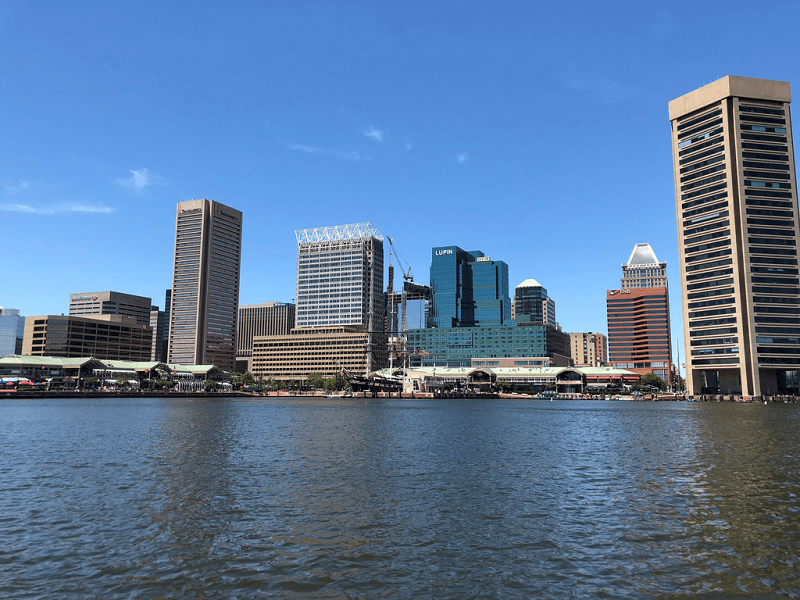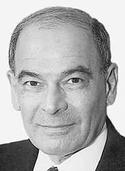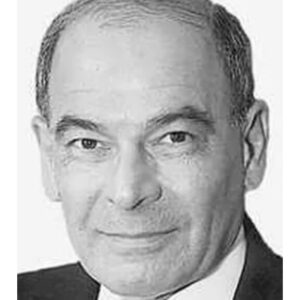Frank DeFilippo: Baltimore Has No Downtown Downtown as the Center of the City Keeps Shifting

There’s always been a reassuring belief that cities have built into them a cyclical rhythm to their lives. Cities come, they go. They prosper, they fade. Often they are reborn out of rubble where history and progress co-exist.
But ultimately it is people who make cities come alive – the whir of life, the rumble and drive of the temblors of commerce, the eclipse of darkness only to come awake again in the sunlit morning.
Baltimore appears to be the exception. It’s stuck in a rut.
It was a munificent gesture by Gov. Larry Hogan (R) to announce that he was reassigning more than 3,000 state employees to privately-owned office space in downtown Baltimore, now with a vacancy rate of 24%.
A bonus for the landlords. This may give them a reason to ease up on their complaining about future competition from the re-development of State Center. But the Titanic is still heading for the iceberg.
Here’s the city’s problem: There’s no downtown downtown, to roughly paraphrase Gertrude Stein’s often paraphrased phrase.
Unlike most cities, Baltimore’s center of gravity keeps shifting. First there was Charles Center. Then came Harbor Place, which begat Harbor East, which begat Fells Point, which begat Canton. The west side never did come alive.
Many businesses are following the bread crumb trail – and the money – to the newly developing areas of the city, as they have in the past, leaving what passes for downtown empty and desolate. The latest to announce its departure to the east side is T. Rowe Price.
Businesses followed, housing followed, people followed. People want to be where the action is. And, if possible, they want to live, work and play in the same general neighborhood, as the huddled populations of European cities do. In Europe, the suburbs, or countryside, are for getaways and weekends and not for daily living.

Frank A. DeFilippo
In Boston, for example, Newberry and Boylston streets, as well as Commonwealth Avenue, are fixed as the city’s main gathering areas. Nothing will ever displace them. Manhattan’s Fifth Avenue will always be among the world’s great boulevards for strolling, people-watching and window shopping for needless baubles you can’t afford. In San Francisco, Union Square anchors the city’s center. In Los Angeles, Rodeo Drive is a permanent fixture as host to Armani, Hermes and Gucci – where the wealthy shop and the masses gather to ogle.
In Baltimore, Charles Street is little more today than a smudged tribute to what once was – the closest approximation to, say, what proper Baltimoreans characterized as host to the “carriage trade,” the city’s main drag of exclusive shops, Easter Sunday promenades and its gateway to fine dining and entertainment.
Baltimore’s other champagne toast to yesterday is Howard Street, which came alive with shoppers on Saturdays at four major department stores – Hecht’s, Hochschild Kohn, Stewart’s and Hutzler’s. There was a social pecking order to shopping as well, as those with their noses highest in the air usually pointing their feet to Stewart’s. And, of course, there was always the haughty respite of Hutzler’s tea room.
Shopping on Sundays was prohibited in those days as Maryland’s colonial-era “blue laws” were still in effect until Hunt Valley arrived in Baltimore County in the 1980s and a statewide coalition of merchants fought for and won repeal of never-on-Sunday shopping.
The one advantage Baltimore had as a gathering point is in serious danger and disrepair, and that is the contiguous entertainment mile or more along Pratt Street. From Orioles Park at Camden Yards, heading straight east to Little Italy, was a continuous adult playground of sights, sounds and an abundance of food.
It came together, by design or accident, originally as a way to homogenize the city when Harbor Place succeeded the annual waterfront ethnic festivals as an attraction for Baltimore’s tribal neighborhoods and suburbanites who had fled the city for the greenswards that wrap around it.
To the entire package state government contributed the Metro system, the Convention Center and the World Trade Center, which helped open the harbor area to development as a tourist attraction.
Today, the Maryland Stadium Authority is practically a holding company for the many city assets that have been assumed by the state, including the two ballyards. With the redevelopment of the Pimlico neighborhood, the Stadium Authority will add another chunk of the city to its portfolio.
But now Harbor Place is an urban scrap heap, half empty and boarded up, with little left to appeal to natives or visitors who can just push on for another 40 miles to Washington to oooh! and aaah! over newer, fancier and pricier attractions and with them the nation’s capital to boot. Maryland pays a high price for being a pass-through state.
Across the street, the T. Rowe Price headquarters building will soon add its share of empty space as will the Equitable building, another adjacency to Harbor Place – once the magnet for location, location, location.
Under Armour is scaling back its original expansive plans for the Port Covington property it owns and will consolidate its operations at the site. The company has also apparently abandoned its plans to resuscitate a huge swath of dilapidated properties in West Baltimore that resemble Dresden after the fire-bombing.
Today, downtown Baltimore, as defined by the Downtown Partnership, is a mile in each direction on the compass from the precise point of St. Paul and Pratt Streets.
Within that circle, as drawn to-scale by your school pencil-compass on a map, roughly 45% of the properties are non-profits – churches, schools, hospitals, nursing homes, colleges – which contribute nothing to the city’s property tax base.
Add to those Mayor Brandon Scott’s plan for the city to acquire a couple or more small hotels to house the homeless and Baltimore’s tax base will further erode, though the cause is worthy enough to offset the economic loss.
The two largest employers within that charmed circle are Johns Hopkins Hospital and its affiliate university, including Peabody, and the University of Maryland Medical Center.
Maryland, and especially the Baltimore region, has a vast network of public and private colleges and universities, notably its medical institutions, as fine as many or most, but few graduates remain in the state or the region because of the lack of opportunities. Even young Black professionals are heading south to take advantage of newly available opportunities.
They raise the same question as Hogan’s decision to help fill Baltimore’s vacant office space: How many of those employees – and how many of Hogan’s reassigned state workforce – actually live in the city?
That is the nub of the city’s problem. Bailing out landlords is a narrow but welcome rescue gesture. How to repopulate the city is the long-sought dream since the flight to the suburbs began after World War II and accelerated in the 1950s and ’60s, chased mainly by several Supreme Court decisions and an end to real estate red-lining.
Those 3,000 or so workers are already here and are merely being shifted to another Zip code, where they’ll grab a burger or taco at lunchtime and head home to their suburban nether lands when punch-out time arrives.
Their relocation occurs as the future of the deteriorating State Center, the huge office complex complete with its own Metro stop, is debated and decided after being on hold for years.
The city years ago flirted with a commuter tax to boost its revenue base as well as to stabilize its population. The dollar-house program was conceived to promote homeownership, revive designated neighborhoods (Federal Hill, the Otterbein) and attract younger people who were eager to live among the bright lights of the city and jog along the waterfront. A chosen few were seeking space to park their watercraft.
But the worst-for-last is the lingering TV image of riot-torn Baltimore in flames, and the thrum of a lawless city where crime and violence are locked into the culture from top to bottom. It’s a repellant.




 Creative Commons Attribution
Creative Commons Attribution